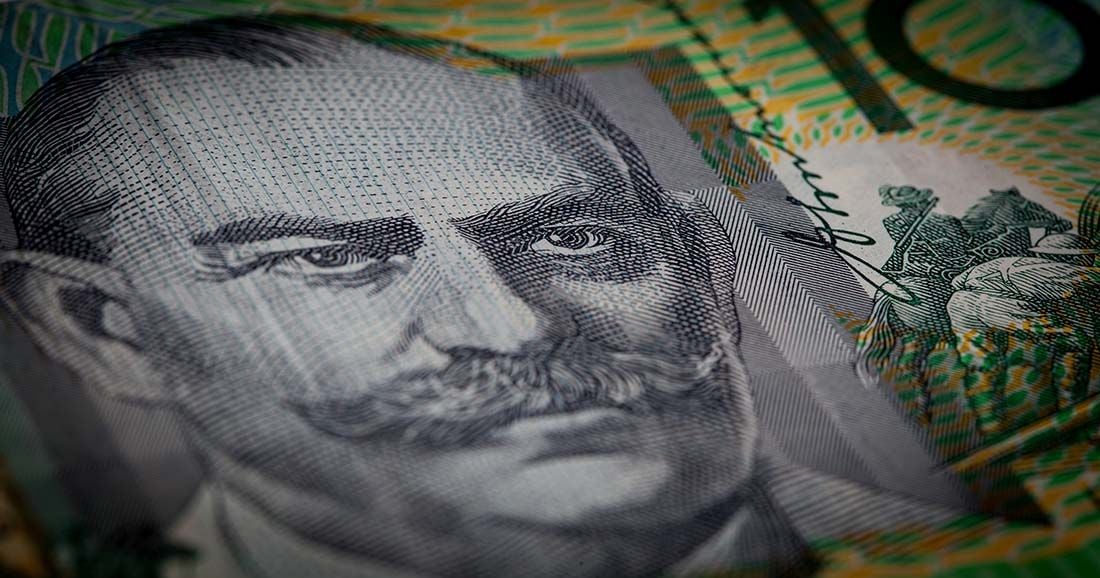Why AUD/NZD Could be Headed Higher
- Written by: James Skinner
-

© Greg Brave, Adobe Stock
- Time to buy the AUD/NZD say Westpac.
- AUD is undervalued and the NZD is overvalued.
- Recent data means mismatch is about to correct.
The Australian Dollar is undervalued while the New Zealand Dollar trades at a premium to "fair value", acccording to analysts at Westpac, who say the AUD/NZD rate should now rise as the mismatch is corrected by the market.
Australia's Dollar weakened against all G10 currencies except the Kiwi on Thursday, and the Westapc team's trade idea on AUD/NZD would deliver profit on any further recovery.
"The NZD has outperformed all G10 currencies over the past four months, and has fully priced a strong set of GDP, CPI, and jobs data, as well as a less dovish RBNZ. NZD/USD is now 2% above fair value," says Imre Speizer, a strategist at Westpac. "In contrast, AUD/USD is 2% below fair value, arguably carrying too much weight from Australian political risks and the US-China trade war."
Much like the Kiwi, the Australian Dollar has been hit hard in 2018 by a combination of factors that have undermined market appetite for the currency through just about every avenue possible.
Inflation and wage figures disappointed investors at the beginning of the year, leading markets to give up hope of an interest rate rise from the Reserve Bank of Australia (RBA) in 2018.
And as both the RBA and Reserve Bank of New Zealand (RBNZ) signalled they would sit on their hands for the foreseeable future, a roaring U.S. economy has compelled the Federal Reserve (Fed) to keep raising interest rates.

Above: Spread, or difference, between yields on Australian and U.S. bonds.
That saw the gap between yields on U.S. government bonds and those of their Australian and Kiwi counterparts turn in favour of the greenback, driving a steep rout in the AUD/USD rate.
Those macroeconomic developments and the associated price action has painted a very similar picture of the Kiwi bond market and performance of the NZD/USD rate this year too.

Above: 2018 percentage changes of U.S. and New Zealand 10-year government bonds.
President Donald Trump's so-called trade war against China has added increasingly to the headwinds faced by the Aussie and Kiwi Dollars since the summer months, given both currencies are substantially underwritten by a significant export trade with the world's second largest economy and both are sensitive to developments around commodity prices.
However, economic data emerging from New Zealand has surprised on the upside since late September, with inflation and GDP growth figures boths suggesting the Kiwi economy is in better shape than some had feared.
This eased pressure on the Kiwi bond market and aided a sustained recovery in the NZD/USD rate but, altough there's also been positive news from Australia in the interim, the upward correction in the AUD/USD rate has lagged that of its Antipodean rival.

Above: AUD/USD (Blue) rate percentage change relative to NZD/USD change (Orange).
That explains why the Westpac team now calculate that the Kiwi is a touch overvalued while the Aussie is still undervalued. And internal forecasts for economic growth and interest rate policies account for why the Westpac currency team say the AUD/NZD should now correct higher.
The performance of both Antipodeans relative to the U.S. Dollar is important for the AUD/NZD rate because the latter can be calculated at its most basic level by dividing the AUD/USD over the NZD/USD rates.
"The RBA is bullish on growth and will also have taken heart from the uptick in wages growth in Q3. Meanwhile, the RBNZ is more cautious about the persistence of growth, and is willing to tolerate an inflation overshoot. AUD/NZD short term fair value, based on yield spreads and relative commodity prices, is 1.12," Speizer writes, in a note to clients.
Spiezer and the Westpac team told clients of the bank to buy the AUD/NZD rate Thursday, saying they are looking for a move up to the 1.0900 level, which would close most but not all of the valuation gap.
The AUD/NZD rate was quoted 0.15% higher at 1.0654 Thursday, although the AUD/USD rate was down -0.10% at 0.7254. The NZD/USD rate was -0.24% lower at 0.6810 and the Pound-to-Aussie rate was up 0.84% at 1.7738.
Advertisement
Bank-beating exchange rates. Get up to 5% more foreign exchange by using a specialist provider to get closer to the real market rate and avoid the gaping spreads charged by your bank when providing currency. Learn more here










